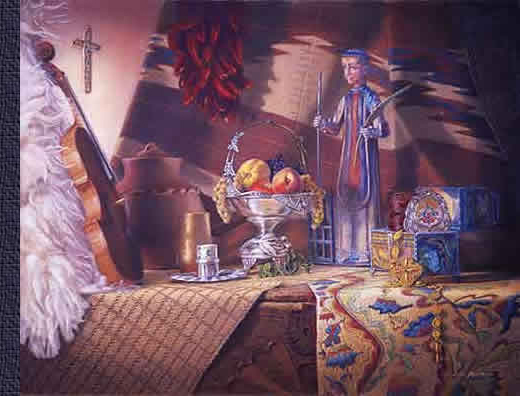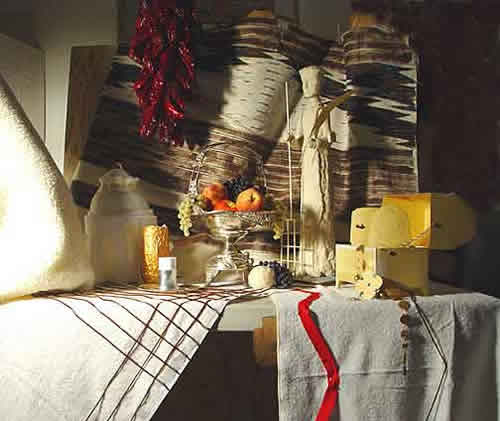 |
In the studio I created the composition. Using my photographs, I made scaled models. The chilies, the silver compote, and the fruit were the only real items that were before me. |
| After all the decisions about selection of items, composition, and directions of light are made, the charcoal drawing is created. A grid is established and photographed to provide future reference as the initial drawing is covered with pastel. | 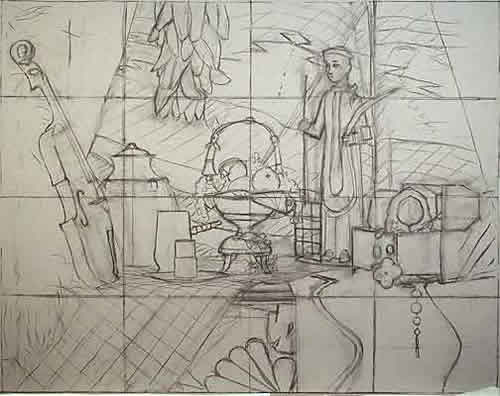 |
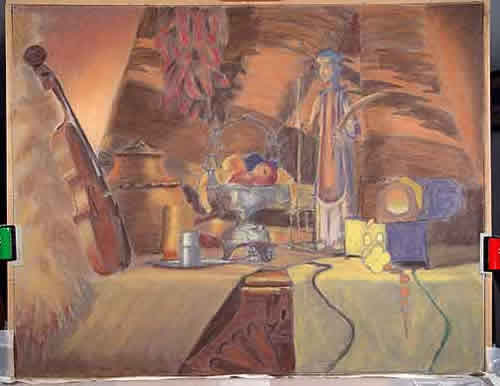 |
The entire 30” x 38” surface is covered with a layer of pastel. Decisions are made here about how the final color will appear. |
| Work begins on establishing richer color and the relative values that will be in the final painting. | 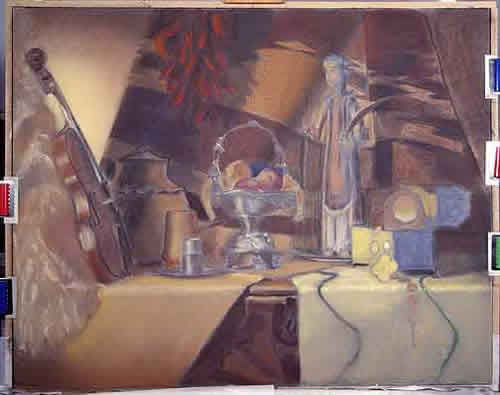 |
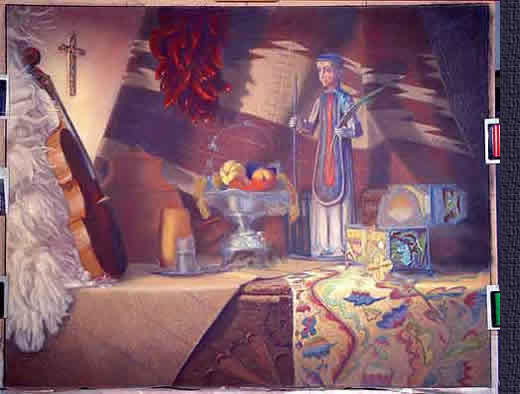 It takes days, and eventually weeks, to develop the texture of the textiles and fibers. The layers of weaving are created one level over the other, with attention to light, shadow, and detail of the fibers themselves. The additional indigo pattern in the Rio Grande weaving comes later. The cross with its fine marquetry work is introduced. The chilies are given rich color with strong shadows. The wooden chest in the foreground comes to life with olives, burgundy and golds added to the browns. It takes days, and eventually weeks, to develop the texture of the textiles and fibers. The layers of weaving are created one level over the other, with attention to light, shadow, and detail of the fibers themselves. The additional indigo pattern in the Rio Grande weaving comes later. The cross with its fine marquetry work is introduced. The chilies are given rich color with strong shadows. The wooden chest in the foreground comes to life with olives, burgundy and golds added to the browns.As I work, my thoughts go to the artisans who patiently created these textiles and furniture, and the early settlers who raised the chiles and fruits. The carving of San Lorenzo begins to take on shape and personality. I think of the carver, and how lovingly he formed the face. The churro sheep pelt, with its complicated texture, requires hours of thought and planning before it begins to suddenly appear …as if by magic. |
| I worked with three easels in the studio. It was important for me to visualize the blend and continuity of form and color across the paintings. | 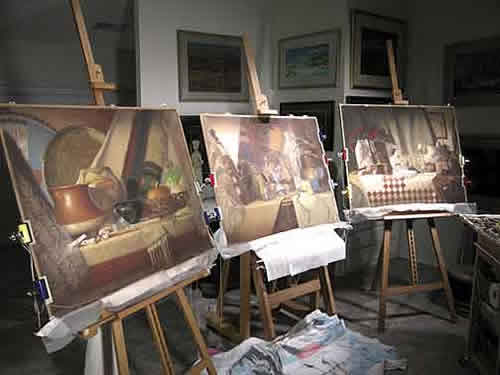 |
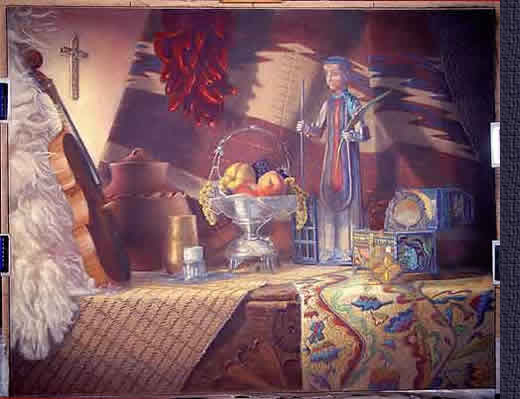 Further attention to the sheep pelt brings out the shadows and light of the layers of long and short hair that are characteristic of the churro sheep. The bulto of San Lorenzo is refined in form and color, light and shadow, with the focus on accuracy to the original carving. The indigo pattern of the background weaving is introduced, as well as the dark brown pattern of the jerga. The shapes of the design in the colcha are more defined. The quince gets a strong layer of yellow. The document box and hair combs begin to take on rich color. At all times the direction of light, with its accompanying reflections and shadows are very important. This painting, which has been clear in my mind for over a year, is finally coming to life. Further attention to the sheep pelt brings out the shadows and light of the layers of long and short hair that are characteristic of the churro sheep. The bulto of San Lorenzo is refined in form and color, light and shadow, with the focus on accuracy to the original carving. The indigo pattern of the background weaving is introduced, as well as the dark brown pattern of the jerga. The shapes of the design in the colcha are more defined. The quince gets a strong layer of yellow. The document box and hair combs begin to take on rich color. At all times the direction of light, with its accompanying reflections and shadows are very important. This painting, which has been clear in my mind for over a year, is finally coming to life. |
Since silver is mostly reflections, the silver pieces waited until the items around them were created. The reflections come from my study and imagination, because the silver compote and the cup holder were never with the other pieces that are seen here. ...The last strokes of the painting are the strings on the violin. At this point the entire painting is studied, critiqued and adjusted. It is judged as it stands alone, and as it relates to the finished paintings on its left and right. When I am finally satisfied, the moment becomes, at the same time, thrilling and exhausting.
|
About Jane • Artist Statement • Historical Still Life Paintings • Vintage Albuquerque • Posters • Public Art • Gallery • Purchasing Reproductions • The Painting Process • Questions/Comments • Contact Jane • Archive • Studio News • Magic • Site Map • Home
